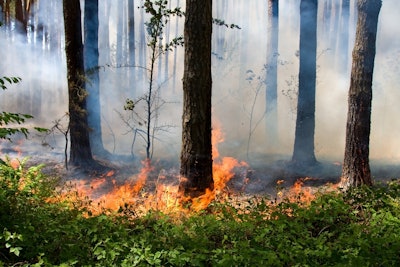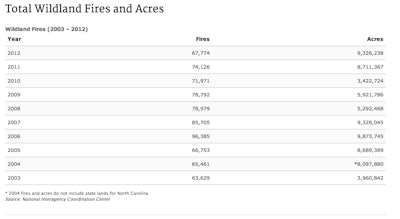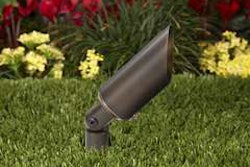
Around the end of summer and beginning of fall, wildfires start popping up across the country and becoming widespread.
Media outlets begin to show disturbing pictures of forests being burnt to the ground and thousands left homeless.
These fires seem to happen every year, some years obviously worse than others, but wildfires do happen. Now is the time for landscapers to start thinking about fire-wise landscaping.
The spring is a great time to start planning landscapes early and get lawns prepared for potential wildfires later this season.
Don’t wait until the fire is in your client’s backyard to start researching a solution. Wildfires can spread far and fast, which makes saving a landscape or home at the last minute out of the question.
There are steps landscapers can take to help create a barrier around properties.
For areas that are prone to wildfires, follow a checklist to make sure your client’s property is well protected.
Additionally, research plants through state Cooperative Extension Services to find out what plants work best in certain areas.
The U.S. Fire Administration gives a few tips on how to help landscapes stay “fire proof”.
- Remove all dead plants, trees and shrubs from the site.
- Reduce excess leaves, plant parts and low-hanging branches.
- Replace dense flammable plants with fire-resistant plants.
- The choice of plants, spacing and maintenance are crucial elements in any defensible space landscaping plan.
Tips for a fire-safe landscape
- Create a defensible space perimeter by thinning trees and brush within 30 feet around a home.
- Beyond 30 feet, remove dead wood, debris and low tree branches.
- Eliminate small trees and plants growing under trees. They allow ground fires to jump into tree crowns.
- Space trees 30 feet apart and prune to a height of eight to 10 feet.
- Place shrubs at least 20 feet from any structures and prune regularly.
- Plant the most drought-tolerant vegetation within three feet of a home and adjacent to structures to prevent ignition.
- Provide at least a 10 to 15 foot separation between islands of shrubs and plant groups to effectively break-up continuity of vegetation.
- Landscape a property with fire-resistant plants and vegetation to prevent fire from spreading quickly.
Choose fire resistant materials
- Create fire-safe zones with stone walls, patios, swimming pools, decks and roadways.
- Use rock, mulch, flower beds and gardens as ground cover for bare spaces and as effective firebreaks.
- There are no “fire-proof” plants. Select high moisture plants that grow close to the ground and have a low sap or resin content.
- Choose plant species that resist ignition such as rockrose, iceplant and aloe.
- Fire-resistant shrubs include hedging roses, bush honeysuckles, currant, cotoneaster, sumac and shrub apples.
- Plant hardwood, maple, poplar and cherry trees that are less flammable than pine, fir and other conifers.
 U.S. Fire Administration
U.S. Fire Administration









